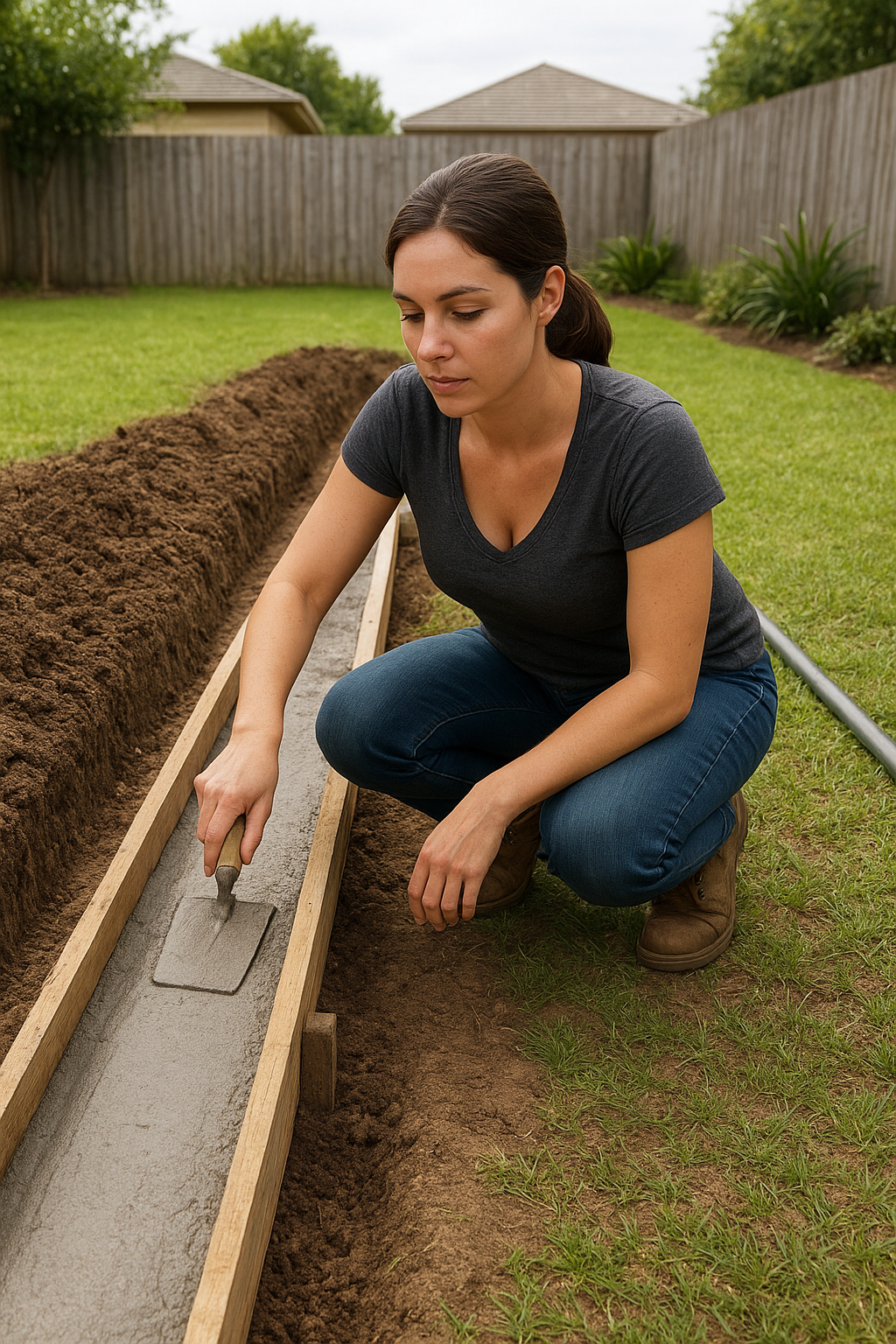With summer rainfall season approaching many suburban homeowners are preparing for heavy storms. In suburban areas with an average stand size ranging
With summer rainfall season approaching many suburban homeowners are preparing for heavy storms. In suburban areas with an average stand size ranging between 500m² and 3 000m², water runoff can quickly overwhelm gardens and even damage foundations. One of the most effective ways to manage this is by installing small concrete drainage channels or stormwater drains that collect water and direct it safely to the street or a designated collection point.
With basic tools, some planning and a bit of elbow grease most DIY enthusiasts can tackle this project. Here’s how to go about it.
Step 1: Plan the Route
Start by identifying the lowest points in your garden where water naturally collects. The channel should run downhill, with a consistent slope, towards the road or a soak-away pit. A fall of about 1 cm for every metre of length is usually sufficient to keep water moving. Use a builder’s line and spirit level to mark out the route or a water level for those that know how to use it.
Step 2: Dig the Trench
Mark the channel path with string or spray paint. Dig a trench roughly 200mm wide and 200–300mm deep, depending on how much water you expect. Keep the base smooth and ensure it slopes consistently in the chosen direction. For smaller gardens, narrower trenches can be used, but make sure they are large enough to handle heavy rainfall.
Step 3: Build Shutters (Formwork)
To give your channel straight sides and a neat finish use shutters or formwork. For DIY work, timber planks or plywood sheets make the most affordable option. They can be cut to size and supported with pegs hammered into the soil. Plastic or metal garden edging boards can also work for smaller sections or be used in conjunction with bricks. The formwork should be secured tightly so that the concrete doesn’t bulge out when poured.
Step 4: Mix the Concrete
For stormwater channels a strong yet workable mix is recommended using:
• 1 part cement
• 2 parts sand
• 3 parts stone (19 mm aggregate)
Add water slowly until the mix is workable but not runny. A stiff mix will hold its shape better in the shutters. If mixing by hand do it on a flat surface with a spade or hire a small concrete mixer for larger jobs.
Step 5: Pour and Shape
Pour the concrete into the trench and spread it evenly with a shovel. Compact the concrete to remove air pockets, then smooth the surface with a steel trowel or wooden float. If you want water to flow more effectively form a shallow curve or “U” shape in the base of the channel using a rounded tool or pipe as a guide before the concrete sets.
Step 6: Curing and Finishing
Allow the concrete to cure slowly for at least seven days. Keep it damp by covering with plastic sheets or lightly spraying water to prevent cracks. Once hardened, remove the shutters and backfill the sides with soil. You can also install mesh covers or paving slabs over the channel to make it safer and blend into the garden.
Important Tips
• Always ensure the channel directs water away from your house.
• For larger properties consider connecting multiple channels to one main channel.
• If unsure about water volumes or municipal regulations consult your local authority or a professional contractor.

